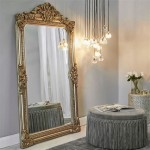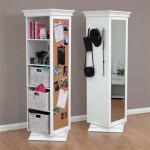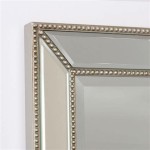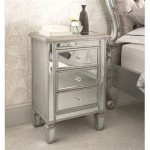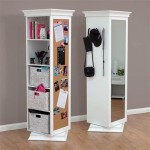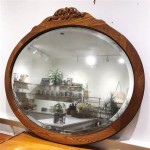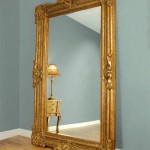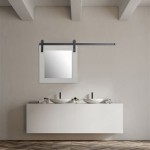How High Should a Light Be Above a Bathroom Mirror?
Proper bathroom lighting is crucial for both functionality and aesthetics. Achieving the right illumination for tasks like applying makeup and shaving while also creating a pleasant ambiance requires careful consideration of fixture placement. One of the most common questions homeowners face is determining the ideal height for light fixtures above the bathroom mirror.
Standard Recommendations for Sconce Height
Wall-mounted sconces flanking the bathroom mirror are a popular and effective lighting solution. General guidelines suggest installing sconces 60 to 66 inches from the floor. This placement typically positions the light source at eye level for individuals of average height, minimizing shadows on the face.
Adjusting for Mirror Height and User Needs
While the standard recommendation provides a good starting point, adjustments may be necessary based on the specific dimensions of the mirror and the needs of the users. If the mirror is particularly tall or short, the sconce height should be adjusted accordingly to maintain proper illumination. Consider the average height of the individuals using the bathroom and adjust the height as needed to minimize shadows.
Spacing Between Sconces
For optimal lighting distribution when using two sconces, they should be spaced approximately 28 to 30 inches apart. This spacing ensures even illumination across the face and minimizes shadows. If the mirror is smaller than the standard width, the distance between the sconces should be decreased proportionally.
Alternatives to Sconces: Overhead Lighting and Vanity Lights
While sconces are a common choice, other lighting options are available. Overhead lighting can provide general illumination for the entire bathroom, while a vanity light bar installed above the mirror offers a more centralized light source. If using a vanity light, the bottom edge of the fixture should ideally be positioned 78 to 80 inches from the floor for a standard height mirror.
Considerations for Vanity Light Size and Placement
When selecting a vanity light, the fixture's size should be proportionate to the size of the mirror and the vanity. The width of the light fixture should generally be two to four inches narrower than the mirror itself. This ensures that the light is effectively directed towards the mirror's surface and minimizes glare.
Dealing with Low Ceilings
In bathrooms with low ceilings, achieving the recommended heights for lighting fixtures may not be feasible. In such cases, prioritizing functionality over strict adherence to standard measurements is essential. Focus on achieving adequate lighting for tasks performed in front of the mirror, even if it requires slight deviations from recommended heights. Consider using smaller fixtures or exploring alternative lighting solutions.
The Importance of Layered Lighting
For optimal bathroom illumination, incorporating layered lighting is crucial. Combining ambient lighting, task lighting, and accent lighting can create a balanced and functional space. Ambient lighting provides overall illumination, while task lighting, such as sconces or a vanity light, focuses light specifically on the mirror area. Accent lighting can be used to highlight architectural features or create a specific mood.
Impact of Bulb Choice and Color Temperature
The type of bulb used and its color temperature significantly affect the bathroom's overall ambiance and functionality. LED bulbs are energy-efficient and long-lasting, making them an excellent choice for bathroom lighting. A color temperature between 2700K and 3000K is generally recommended for bathrooms, as it provides a warm, inviting light that is ideal for grooming tasks.
Evaluating Lighting Effectiveness: The Mirror Test
Once the lighting fixtures are installed, it's important to evaluate their effectiveness. A simple mirror test can help determine if the lighting is adequately illuminating the face without casting harsh shadows. Stand in front of the mirror and observe the lighting on your face from different angles. Adjust the fixture placement or bulb type as needed to achieve optimal illumination.
Professional Consultation for Complex Lighting Scenarios
For complex bathroom layouts or unique lighting requirements, consulting with a qualified electrician or lighting designer is recommended. They can provide expert guidance on fixture selection, placement, and wiring to ensure that the bathroom is both functional and aesthetically pleasing.

How High To Place Your Bathroom Fixtures Inspired Style

Guide To Hanging Bathroom Vanity Lighting And Mirrors Liven Design

How High To Place Your Bathroom Fixtures Inspired Style

How High To Place Your Bathroom Fixtures Inspired Style

Vanity Light Height The Home Depot

Your Guide To Bathroom Lighting
Complete Bathroom Lighting Guide For Design Success Your Designer Bff

How High To Place Your Bathroom Fixtures Inspired Style

Your Guide To Bathroom Lighting

What Is The Ideal Bathroom Vanity Light Height Hunker

